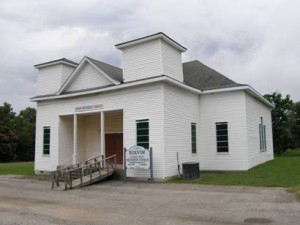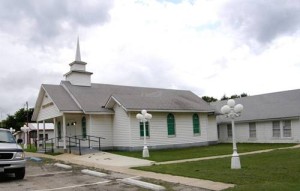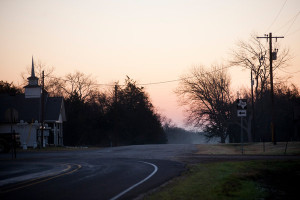 History is important for what we learn from it. How many people know of this incident today, which occurred 93 years ago, now that all the
History is important for what we learn from it. How many people know of this incident today, which occurred 93 years ago, now that all the 

 eyewitnesses are gone?
eyewitnesses are gone?
“On May 4th, 1922, after the last full day of school in Kirven, Texas, 17-year-old Eula Ausley was taken from her horse, carried into the thick brush, sexually mutilated and then beaten to death. Her disappearance was noticed immediately and family members organized a search party to investigate. Her nearly decapitated, naked body was found soon after and the search became a manhunt. …
” Despite the fact that Sheriff Horace Mayo already had two white suspects who were enemies of Eula’s family in custody, Mayo changed the focus of the investigation. He arrested Curry and apparently forced a statement which implicated two other men, 19-year-old Johnny Cornish and 46-year-old Mose Jones, that had been arrested on the suspicion that they were friends with Curry.
“A mob consisting of most of the search party assembled outside the jail to sate its hunger for vengeance. After midnight on May 6th, the mob forced its way into the prison and dragged the three black suspects out of their cells. They were driven to a lot between the old Baptist Church and the Methodist Church in Kirven. …
“Curry, Jones and Cornish were taken from the cars and thrown to the ground in front of the crowd. … Accounts vary as to what happened next. All agree that Curry was castrated. … When enough wood was available, the bloodied Curry was bound to the plow’s seat and doused in gasoline. The wood was stacked up all around him and a match was applied. The flames consumed him and within ten minutes he was dead and his flesh was nearly all burnt to a crisp.
“Next, Jones was brought forward. As the metal of the plow was too hot to touch, a water soaked rope was used to tie up Jones hands and drag him back and forth through the fire. Witnesses say that when he would come out on one side of the fire, members of the lynch mob would beat him back in. …
“Cornish, having seen the slow, painful deaths of his friends, cursed the sadistic lynchers. After being pulled through the flames only a few times, Cornish grabbed the plow and stuck his head deep into the fire, inhaled, and died. The three dead bodies were then piled up, doused again with kerosene and oil and lit afire. Whatever ashes the wind did not sweep up that morning were taken home as souvenirs. …
“Terror reigned for days afterwards as aftershocks of the three burnings claimed more lives. On the morning of May 8th, Shadrick Green, a friend of Cornish and Jones who was said to have been fishing with the two on the fourth, was found hanging from a tree. He was naked with his neck broken and his body was riddled with bullets. It seems as if after this lynching, open season was declared on all Negroes ….
“The mobs roamed the streets killing any blacks they could find. Survivors claimed that hanged blacks were found daily and that other bullet-ridden bodies were discovered in outhouses, fields and shallow graves. By June 9th, 1922, the rash of murder and lynching had ended but the effects on Kirven were grim and lasting. Many of the town’s workers disappeared as nearly the whole black population left the area. The oil economy dried up. Now, Kirven is a vestigial place almost a ghost town.
“A recent investigation and book, Flames After Midnight: Murder, Vengeance and the Desolation of a Texas Community, by Monte Akers, concluded that Mose Jones and Johnny Cornish were innocent. McKinley ‘Snap’ Curry is now believed to have accepted $15 to assist two men in murdering Eula Ausley. The two men, Claude and Audey Prowell, were the same two men in custody when Curry was arrested. Their bloody tracks led from the murder site to their house but they were released after four black men, Curry, Jones, Cornish and Green, had already paid the price.”
From a book review of Akers’ book:
“Lynchings in Texas seemed to occur in cycles, sudden and unpredictable outbreaks of fury that spread from community to community like a virus. In the spring of 1922, for example, a single four-week span saw lynchings in Allentown, Bryan, Conroe, Kirven, Plantersville, and Waco.
“It is the lynchings in Kirven (now spelled Kirvin), a tiny crossroads community in Freestone County, that are the subject of Monte Akers’ Flames After Midnight. Akers, a lawyer and amateur history buff who moved to the area in 1981, had his interest piqued after hearing a local resident remark, ‘Kirvin is where they burned the niggers.’ Several years later Akers, who eventually served as the chairman of the Freestone County Historical Commission, came across copies of the local newspapers detailing the events of 1922. These led him to begin searching out and interviewing the remaining eyewitnesses, both black and white, who still lived in the area. By the time he left Freestone County in 1990, Akers had accumulated almost all the key bits of evidence surrounding the case ….
“Basking in the economic prosperity of Kirven was local landowner John King, who with his five sons was among the area’s wealthiest residents. While local papers referred to the Kings as ‘men of sturdy character who are towers of strength in their community,’ Akers’ informants recalled them as being ‘domineering,’ ‘outrageous,’ and ‘hard.’ Blacks in particular remembered the Kings as ‘ugly people who didn’t believe in being fair.’ Several of the sons had the habit of carrying handguns with them wherever they went, and apparently used them without hesitation to pistol-whip blacks who worked for them. …
“On May 4, 1922, the body of seventeen-year-old Eula Ausley was discovered in a creek bed a few miles outside of Kirven. Ausley, granddaughter of clan patriarch John King, had been brutally assaulted and murdered, and local townspeople immediately formed a posse to hunt down the assailant. A solitary Mexican woodcutter seen in the area was the initial suspect, but by the following morning a rumor spread that gangs of African-American men were roaming the countryside looking for white women to rape and murder. …
“Later that evening, a 165-car caravan led by members of the King family arrived in Fairfield, and the mob demanded that Mayo release his prisoners to them. Mayo quietly handed the men over and the Kings drove back to Kirven. At some point during the evening, Curry was castrated. When the lynch mob returned to Kirven, a crowd of as many 1,000 people quickly gathered in a large vacant lot in the center of town. Curry and Jones were in turn soaked with gasoline, tied to a plow, and set on fire; Cornish was apparently tied and dragged back and forth through the fire until he was also burned to death ….
“The following day the body of another King field hand was found hanging from a tree, riddled with bullets, and for the next three weeks a wave of racist killings terrorized Freestone County. Much of the violence seems to have been orchestrated by the King family, although some residents remembered the area suddenly being overrun by armed white men from out of town, ‘sort of like professionals,’ according to one of Akers’ informants. While local papers only reported two more deaths, a white resident estimated that as many as a dozen blacks were murdered during this period. A black resident claimed the final number was twenty-seven.
“One witness recalled driving between Fairfield and Mexia during this period when he came across a black man tied to a tree, surrounded by a crowd of men who were taking turns shooting at his ears and his nose with their pistols. The madness ended only after a posse led by three of the King brothers attacked the small African-American settlement of Simsboro, just outside of Kirven. There they met armed resistance organized by one of the residents, who had fought in France during World War I. In the ensuing gun battle, two blacks and two posse members were killed.
“The deaths of two white men provoked immediate calls for an end to the bloodshed, and prompted county officials to organize a mass meeting and produce a resolution declaring, ‘the killing and terrorizing of Negroes in the county must now cease.’ The King family issued a public statement declaring that all guilty parties had been punished to their satisfaction ….
In the first half of Akers’ book, he relates all of the foregoing events in a straightforward fashion, supported by the standard forms of historical research: newspaper accounts, official records, and interviews with surviving witnesses. In the second half, however, Akers takes his readers back over the evidence piece by piece, to provide an alternative and even more disturbing version of events. And while Akers makes an ill-advised attempt to tease a little suspense out of his investigations, this is no murder mystery that can provide the reader a pleasant shock of recognition upon the solving of the case. Instead, most of Akers’ readers will experience a sickening sense of inevitability when he finally lays out his conclusion: that innocent men were burned alive that night in Kirven, and that some of those involved in the lynching were fully aware of that fact.
“Actually, Akers possessed a key piece of information almost from the start of his investigation, although he did not realize it until years later. One of his first interviews was with an elderly black lady who worked for the Kings as a house servant, and she made a guarded but unmistakable reference to the fact that the Kings believed that the actual murderers of Eula Ausley were two white men — members of a neighboring family named Prowell, who previously conducted a bitter and occasionally violent feud with one of the King brothers over a disputed property line. …
“According to the [NAACP] report, John King remained distraught for weeks after the crime, convinced that his granddaughter was murdered by the Prowells, who fled the county as soon as they were released by the sheriff. The sheriff, who was up for re-election the following fall, claimed to have no regrets about turning his suspects loose. ‘Enough [have] been punished for the deed already,’ was his curt reply to questions about his actions, a response that seemed to stun the report’s author:
“The people of that community are utterly unaware of the fact that they have done any deed for which they should be ashamed. They feel no kind of conscious scruples. It is no matter of offence to their consciences that these victims may not have been guilty. They have the idea that Negroes have paid the penalty and the matter is settled as far as they are concerned.”
“Flames After Midnight is not a pleasant book to read, in part because of the extreme brutality of the incidents it depicts, in part because Akers cannot bring his narrative to a satisfying close. Outside of the handful of Simsboro residents who stood up to the posse, there are few heroes in this tale, and even Akers comes to the reluctant conclusion that Snap Curry may have, in fact, been involved in murder, perhaps acting as an accomplice to the Prowells in exchange for a small sum of money. Why he implicated Jones and Cornish remains a mystery. Why the Kings did not insist on tracking down the Prowells after their release remains a mystery. How many lynchings took place in Freestone County in the weeks following the burnings remains a mystery. The identity of the two white men killed at Simsboro remains a mystery. …
“In the aftermath of the lynchings, all but a handful of black families left the area, never to return. They were shortly followed by a number of white farmers who discovered that without access to cheap field labor, it was no longer economical to grow cotton. The expected oil boom never materialized, and the local bank soon closed its doors. Other businesses followed, and a series of mysterious fires later destroyed almost all of the downtown buildings. Most of the remaining buildings were torn down for their bricks.
“But the King family continued to thrive — John King eventually put aside his grieving for his granddaughter, and lived to a ripe old age; after his first wife died, he married his fifteen-year-old housekeeper. Horace Mayo failed to get re-elected as sheriff, lapsed into alcoholism shortly thereafter, and committed suicide a few years later. Some of the Prowells eventually returned to the county, settled into retirement, and were buried in the same county cemetery that contained the remains of Eula Ausley.
“In his introduction, Akers tells us that the story of the Kirven burnings supply ‘the best that history can offer — a chance to study something that should never be repeated.’ But Akers’ statement must seem more than a little naïve for the thousands who witnessed the recent very public lynching of Gary Graham on television, while political pundits debated whether it helped or hurt Governor Bush’s presidential ambitions to execute a man who might have been innocent. Bush and his advisors, of course, are only stealing a page from Bill Clinton’s 1992 campaign script, when he rushed back to Arkansas during the New Hampshire primary to personally sign the death warrant of a brain-damaged inmate. Focus-group sessions held by pollsters had suggested that middle-class voters thought the Democrats were too beholden to blacks. These little exercises in political calculus float through our criminal justice system like postcards bearing gruesome images from a different era. They remind us of a not-so-distant past, when the innocent were punished, the guilty went free, and the media poured on the gasoline and then sold soda pop.”
And this latter reason is why events like this are still relevant today.
Neither the Seattle nor King County libraries have Akers’ book, so if you want to read it, you may have to buy it. It’s available from Amazon here, Barnes and Noble here, or Powell Books here.
Photos: Eula Ausley’s grave (top left), Old Baptist Church (top right), Methodist Church (center), and lynching site (bottom) as they appear today.